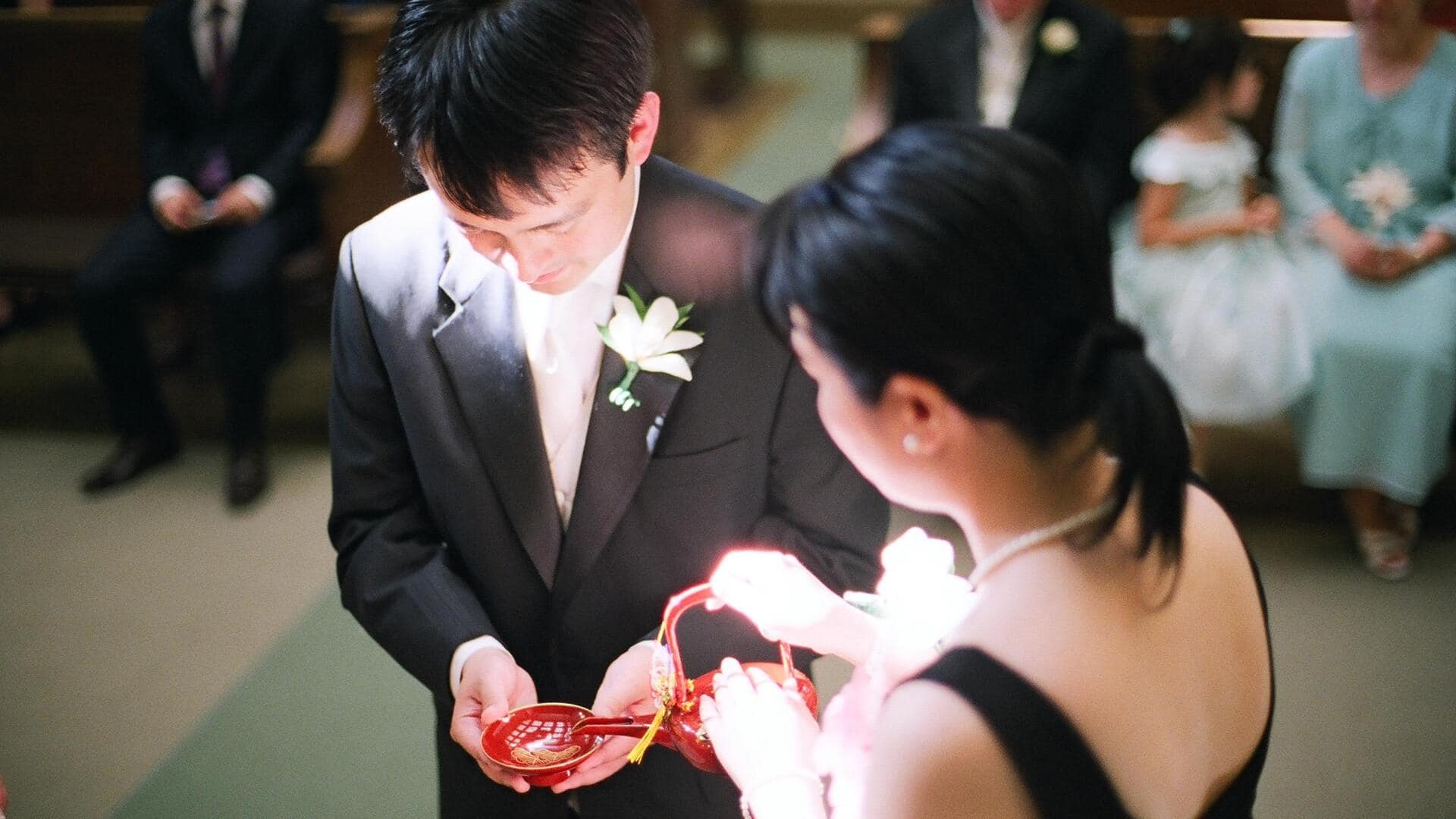
These wedding traditions from Japan will leave you intrigued
What's the story
Japanese weddings are a beautiful blend of ancient customs and modern influences. These ceremonies are steeped in tradition, offering a glimpse into the rich cultural heritage of Japan. From the attire to the rituals, each element holds significant meaning. Here are five unique wedding traditions that highlight the distinctiveness of Japanese nuptials, giving you an insight into how love and commitment are celebrated in this culturally rich nation.
#1
The importance of 'san-san-kudo'
San-san-kudo is a pivotal ritual in Japanese weddings. The bride and groom take three sips each from three different cups, making a total of nine sips. This act symbolizes the binding of the couple, their families, and their friends. The number nine is considered auspicious in Japanese culture as it denotes eternity and completeness. This tradition is often performed during Shinto weddings, signifying unity and harmony among all parties involved.
#2
Traditional attire: Kimono and Hakama
In most Japanese weddings, traditional attire is a must. The bride usually wears a white kimono with a red undergarment called an obi, while the groom wears a hakama, a pleated skirt-like garment. The white kimono symbolizes purity and new beginnings, while the red obi stands for joy and good fortune. The hakama represents honor and respect. This attire is a way to honor cultural heritage even today.
#3
Shinto rituals at the altar
Shinto rituals are an integral part of many Japanese weddings. They usually take place at shrines or makeshift altars at venues. Key rituals include exchanging nuptial cups (san-san-kudo) and offering prayers for blessings from deities (kami). These rituals are meant to ensure prosperity, health, happiness for couples throughout their lives together.
#4
'Kagami-Biraki' celebration
Kagami-biraki translates to "opening the mirror," which refers to breaking open traditional barrels during celebrations after wedding ceremonies have concluded. This tradition symbolizes breaking barriers between families, bringing them closer together as one united entity post-marriage. It also signifies sharing joy among guests present during receptions, making it an essential part of festivities following official vows exchanged earlier in the day.
#5
'Shugi-bukuro' monetary gifts
Shugi-bukuro are envelopes containing monetary gifts given by guests attending weddings in Japan. These envelopes are beautifully decorated, often with intricate designs, reflecting the occasion's significance. The amount inside varies depending on the relationship to the couple but is generally around ¥10,000 (approximately $100). This tradition helps cover the costs associated with hosting the event and is a gesture of goodwill and support for the newlyweds.